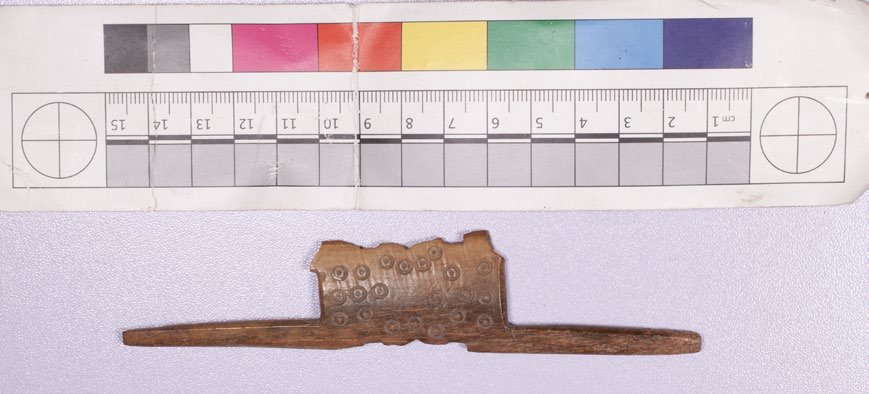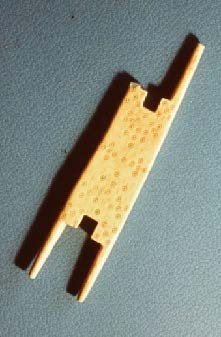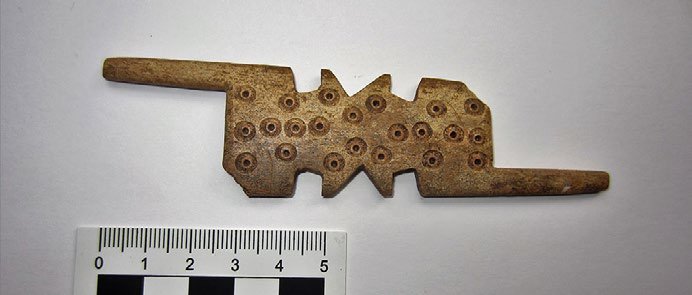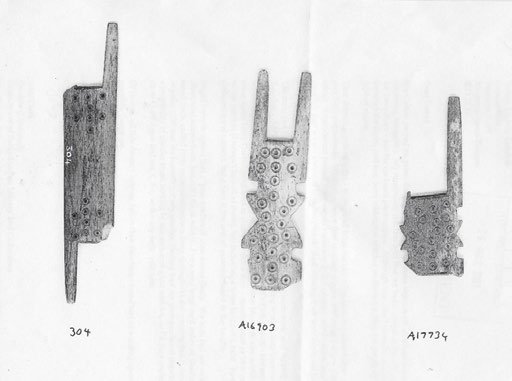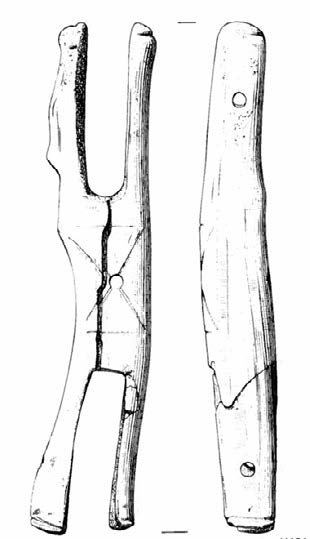An Unusual Bone Item from Gillingham
At the end of last year, a small, unusual item was brought to me for identification having been recently found whilst digging up a back garden in a property near Gillingham. This unusual item immediately caught my attention as it was decorated with ring-and-dot motifs on both faces of its central body.
Fig 1 – KENT-923139. Courtesy of the Kent Archaeological Societ y
The ring-and-dot motif is an art style found on objects throughout Britain and Europe with items from the Bronze Age through to the Medieval period carrying this pleasing design. Often in analysis of ring-and-dot decoration or other art styles on non-metallic items, the art style itself has been seen as a form of “Folk-Art” and of lesser-skill when compared to metalwork.
In attempting to identify what this object is, it was realized that it forms a potentially unique artefact, being one of only seven known in England, with others being found at Mitcham Grove (Fig 2), Kingston (Fig 3) and three in the Museum of London collections (Fig 4). A further, larger example was found at Meare Lake Village East (Fig 5).
Fig 2 – Mitcham Grove
Fig 3 – Kingston
Fig 4 – Museum of London Collection
Fig 5 – East Meare Lake Village
Fig 6 – Complete Bone Tool
As in the other examples, the find from Gillingham has cuts in the frame of the tool with three portions cut out of both sides. It would once have had four arms extending out from the body, but now sadly only two remain. Its surface is highly polished, which at first suggested that the item was made of deer antler. However, following discussion with colleagues at the Portable Antiquities Scheme we can confirm it is made of animal bone, most likely cattle or horse.
The exact function of this item and the comparable examples is unknown, as is the date of its creation. The East Mere Lake Village example dates from the Iron Age but the others have been given various dates from Iron Age through to Post Medieval. Further investigation or a discovery of an in-context find would hopefully help answer this once and for all.
The find has now been recorded on the county’s Portable Antiquities Scheme (PAS) database, which makes the find and its information available to the public and researchers. If further examples of this object type are known, please do get in touch with the society curator at: andy.ward@kentarchaeology.org.uk

